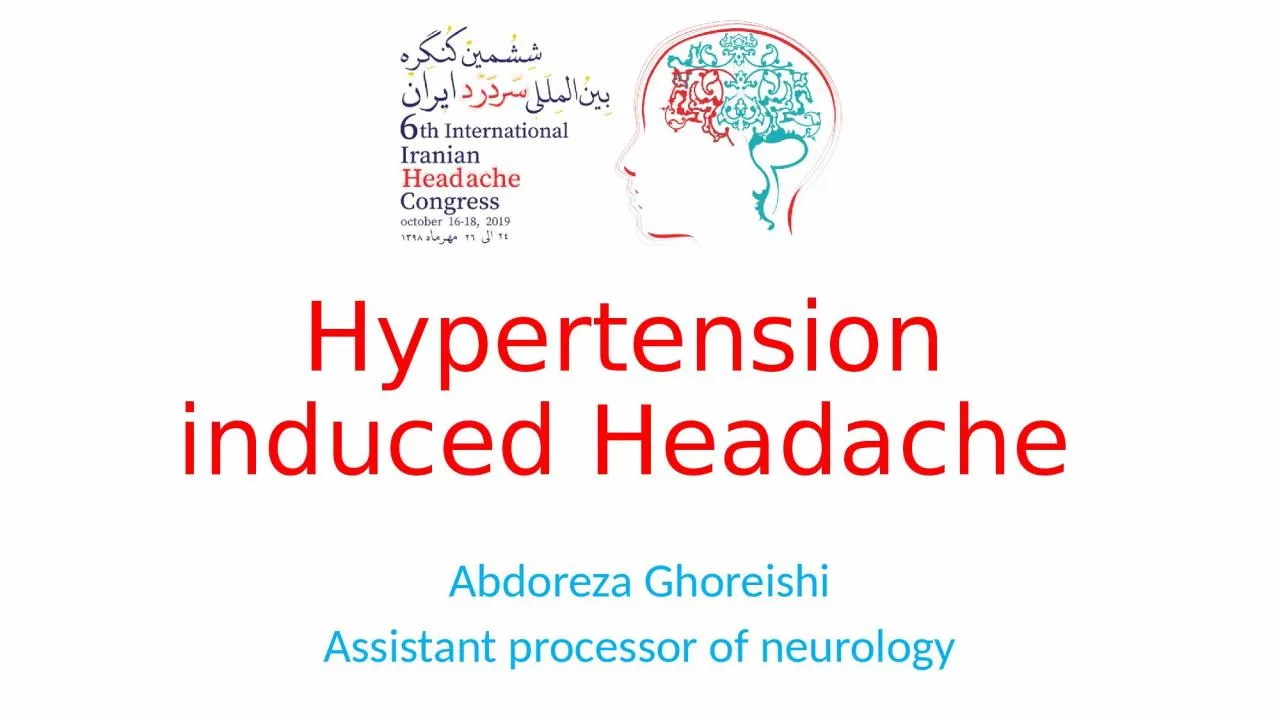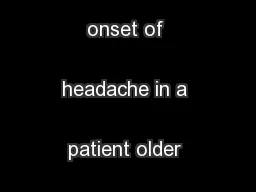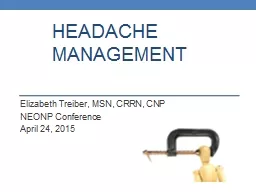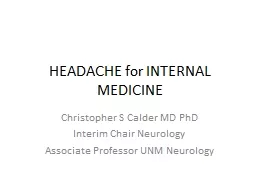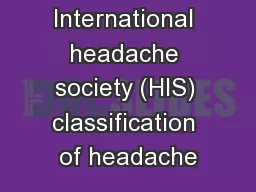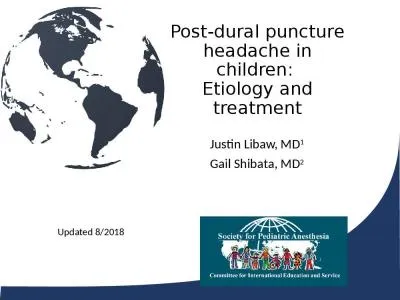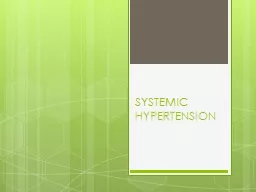PPT-Hypertension induced Headache
Author : CherryPoppins | Published Date : 2022-08-03
Abdoreza Ghoreishi Assistant processor of neurology Outlines Various etiologies of hypertensive headaches Relationship between chronic hypertension and headache
Presentation Embed Code
Download Presentation
Download Presentation The PPT/PDF document "Hypertension induced Headache" is the property of its rightful owner. Permission is granted to download and print the materials on this website for personal, non-commercial use only, and to display it on your personal computer provided you do not modify the materials and that you retain all copyright notices contained in the materials. By downloading content from our website, you accept the terms of this agreement.
Hypertension induced Headache: Transcript
Download Rules Of Document
"Hypertension induced Headache"The content belongs to its owner. You may download and print it for personal use, without modification, and keep all copyright notices. By downloading, you agree to these terms.
Related Documents

